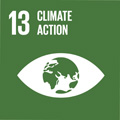- Docente: Lucia Ferrari
- Credits: 6
- SSD: ING-IND/22
- Language: English
- Teaching Mode: Traditional lectures
- Campus: Bologna
- Corso: Second cycle degree programme (LM) in Building Engineering -Architecture (cod. 5697)
-
from Feb 17, 2025 to Jun 09, 2025
Learning outcomes
Students learn how to select and employ building materials having low environmental impact in their life cycle, in compliance with the Sustainable Development Goals.
Course contents
- Introduction to the principles of LCA (Life Cycle Assessment): goal, scope, inventory analysis, impact assessment and interpretation. Relation between LCA and sustainability.
- Traditional binders for construction: gypsum, aerial lime, hydraulic lime, Portland Cement. Explanation of their characteristics, raw materials and production process, setting and hardening, performance, and consequent environmental impact.
- Presentation of main Supplementary Cementitious Materials (SCMs): natural pozzolana, fly ash, calcined clay, blast furnace slag. Details about their origin, their effect on cement hydration and allowed content in cement according to EN 197-1. Use of by-products and waste.
- Low carbon cements, alternative clinkers and environmetal impact. Update of the EN 197-5:2021 and contribution of LC3 to SDG.
- Concrete: formulation, Role of Water (w/c), CO2 Emission in Concrete.
- Aggregates for concrete production: definition, optimal grading curves, moisture, alkali-silica reaction. Recycled aggregates and their environmental benefits.
- Admixtures for concrete according to standard EN 934.
- Performances of concrete: workability, mechanical strength and durability. Service life and durability of as a contribution to sustainability. Classification of performances according to EN 206.
- Self-compacting concrete, heavyweight and lightweight concretes as contributor to thermal insulation and safety protection. Digital construction techniques in promoting sustainability.
- Ceramics materials and glass: Sustainable ceramic materials for architecture. Characteristics, performance, environmental impact and safety issues.
- Polymeric materials: thermoplastic and thermoset polymer. Sustainable materials for the energy efficiency and retrofitting of the building envelope.
- Hygiene and health requirements of building materials according to EU Regulation 305/2011. Possible emission of VOCs and radiation, release of toxic and dangerous substance, dampness.
- Environmental labels of building materials
Readings/Bibliography
- N. Jackson (Ed.) Civil Engineering Materials. Macmillan Press London 1983
- M. Illston (Ed.) Construction Materials. E & F Spoon London 1994
- Teachers' presentations available online
- Link to Open Access publications and documents available on the web.
Teaching methods
Frontal lessons in which both the room board and slides will be used. References to practical applications of materials and to examples are made during the lessons, also using brief numerical exercises. The attendance of the lessons is warmly recommended. A strong interaction between professor(s) and students during the lessons is used to improve the understanding of the topic and solve possible doubts.
Training sessions in laboratory take place during the lessons, on cements and concrete. To join these practical lessons, it is necessary to take the courses on safety online (modules 1 and 2).
Assessment methods
Verification of learning is through final oral examination on the entire program, which is given a grade in thirtieths.
The oral interview grade is based on the evaluation of the exposition of the required topics.
Passing the exam will be granted to students who demonstrate mastery and operational ability in relation to the key concepts explained in the teaching.
A higher grade will be awarded to students who demonstrate understanding and ability to use all the content of the teaching by illustrating it with language skills, reasoning and connection of the various topics covered.
Failure to pass the exam may be due to insufficient knowledge of key concepts and lack of mastery of technical language.
Teaching tools
- Lectures with the aid of video projector and blackboard, also supported by projection of images and instructional videos. Additionally, the traditional blackboard will be also used.
- 1-2 laboratory exercises will be carried out.
- Teaching materials are also available https://virtuale.unibo.it/
Office hours
See the website of Lucia Ferrari
SDGs




This teaching activity contributes to the achievement of the Sustainable Development Goals of the UN 2030 Agenda.
